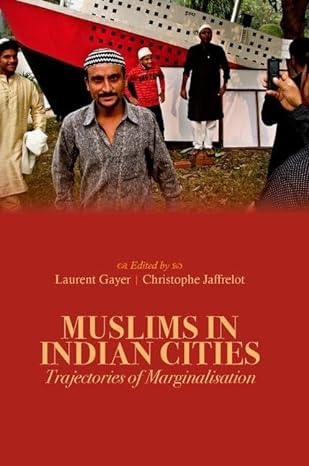In any Country the faith and the confidence of the minorities in the impartial and even functioning of the state is the acid test of being a civilized state.
Justice Rajender sachar
Why I Picked This Bok?
“Muslims In Indian Cities – Trajectories of Marginalization”, the title of the book is resonating with the current times. We have witnessed not only constant vilification, othering, demonization, and marginalization of Muslims but also increased violence against them in the last ten years. The book tells that violence, vilification, and demonization may be a new phenomenon, but the marginalization was always there. I decided to read the book to get a better understanding of how Muslims were marginalized and confined to ghettos and slums.
The Book
“Muslims In Indian Cities – Trajectories of Marginalization” is a well-researched and meticulous study of the socio-economic conditions of Muslims in eleven Indian cities. It provides us with a brief history of the cities and how their population distribution changed over time. The book captures the reasons for the religious segregation in the cities and its impact on Muslims. India until a few years back was seen and known as a religiously tolerant country and safe for its religious minorities. This book breaks the myth and shows the readers the exclusionary behavior of the state.
It is a difficult yet important read, especially in the times we are living in. It gives us an idea of how people are systematically segregated based on religion. There are specific examples of cities like Bhopal, Ahmedabad, Mumbai, Hyderabad, Jaipur, Delhi and many more. It gives the readers a brief history of the population distribution in these cities based on class, caste, and the professions of the people. It started to change post-independence, and now more and more segregation in the urban and rural areas is based on religion.
Rumor-mongering and deliberate attempts to create a rift among Hindus and Muslims were also used as a tool to create tension and riots, which in turn helped in segregation. We have seen it post-1992 communal riots, Muslims living in mixed localities moved to Muslim-majority localities for security reasons. It has happened across India, but mostly in northern India. The book also explores how segregation, and the “ghettoization” of Muslims impacted their socio-economic conditions.
The book showcase the economic deprivation and insecurity faced by Indian Muslims and the formation of Muslim slums. It also captures how boundaries between the state and the right-wing Hindu groups are blurring. The sole idea is to keep the community excluded from the mainstream society.
It talks about the intrinsic nature of each city and how Muslims in each of these cities reacted to changes. And for that matter how Hindus of those cities reacted in the times of communal tensions. In some cities lines are drawn between the Hindu and Muslim localities and in others Muslims are choosing to move to mixed localities. The book presents a detailed ethnography of the cities it covers.
This book provides a lot of information and insight in understanding the living conditions of Muslims in India. It has a collection of some great essays written by various authors and edited by Christophe Jafferlot and Laurent Gayer.
About the Editors
Christophe Jaffrelot is Research Director at CNRS and teaches South Asian politics and history at Sciences Po (Paris). From 2000-8, he was Director of CERI at Sciences Po. Arguably one of the world’s most respected writers on Indian society and politics
Laurent Gayer is a Research Fellow at the Centre national de la recherche scientifique (CNRS), currently posted at (CSH), Delhi. He is also Research Associate at the Centre d’Etudes de l’Inde et de l’Asie du Sud, Paris.
